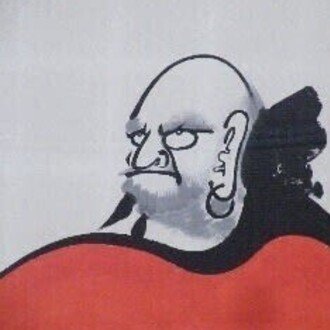
京・島原に5人目の太夫が誕生。 The fifth Tayu was born in Shimabara, Kyoto. ‥
いささか古びた話になるが、50年ぶりに京都の花街復活をめざす島原に「太夫」が誕生した、という話題が京の花街を巡った。その名は「葵太夫(あおいたゆう)」(写真)という。
It is a little old story, but the topic of "Tayu" was born in Shimabara, which aims to revitalize the area with geisha in Kyoto for the first time in 50 years. Its name is "Aoi Tayu" (photo).
2014年11月26日、禿(かむろ・太夫の身の回りを世話する おつきの童女)、振袖太夫(ふりそでたゆう・太夫の見習い、芸妓に対する舞妓のようなもの)の修行を経て誕生。現在、島原で活動する太夫としては5人目である。
Born on November 26, 2014, after training as a bald child (a baby girl who takes care of Kamuro and Tayu's surroundings) and Tayu Furisode (an apprentice of Tayu, a maiko for a geisha). This is the fifth tayu currently active in Shimabara.
そもそも太夫というのは、豊臣秀吉が、都を活性化するためにつくったとされている。とくに島原は江戸時代に栄えた花街で、いまでいう夜のテーマパークのような存在だったようだ。町人商人はもちろんだが、武家や公家さんたちも散在したようだ。
In the first place, Tayu is said to have been created by Hideyoshi Toyotomi to activate the city. In particular, Shimabara is an area with geisha that flourished in the Edo period, and it seems to have been like a theme park at night. Not to mention the merchants, it seems that samurai and officials were scattered.
そこの最大の人気キャラクターで高嶺の華的存在が太夫である。歌舞、茶道、華道、俳諧などの多彩な芸と豊かな教養を持つ芸妓の最高位として、当時は大人気を博したといわれている。
The most popular character there is the lofty dream. It was said to have been very popular at the time as the highest geisha with a variety of arts and rich education such as kabuki, tea ceremony, flower arrangement, shamisen, haiku, and so on.
ここで、少し太夫の説明をすると、よく混同されているのが「花魁(おいらん)」である。江戸時代から太夫と花魁は一緒にされてきたようだが、大きな違いは「職業」である。花魁は “春” を商売にしているのに対し、太夫は “芸” をおもてなしにしたサービス業である。その誇りがいまの京都の花街を支えているといっても過言ではない。
Here, when I explain Tayu a little, it is "Oiran" that is often confused. It seems that Tayu and Oiran have been together since the Edo era, but the major difference is "occupation". Oiran sells "Spring(prostitution)" a business, while Tayu is a service business that makes "Gei(performing arts)" entertaining. It is no exaggeration to say that that pride supports the present-day area with geisha in Kyoto.
そして、衣装の特徴として、短い袖の豪華な打ち掛けに嶋原結びの帯といういで立ちが独特の太夫の雰囲気を醸し出す。この結びは、漢字の「心」を表している。手は、必ず帯の下に入れ、帯の上には出さないという。手を出すと、心を隠すことになるからというのが理由のようである。
And, as a characteristic of the costume, the luxurious striking of short sleeves and the standing of the Shimabara knot obi create a unique tayu atmosphere. This knot represents the kanji "heart". Be sure to put your hands under the belt and not over it. The reason seems to be that if you put out your hand, you would hide your heart.

若々しい葵太夫独特の艶深さに惹かれる老若男女は多いようである。年に何回かはイベントがあるようなので、実際に出向いてみると江戸時代にタイムスリップするかもしれない。
It seems that there are many men and women of all ages who are attracted to youthful Aoi Tayu's unique luster. It seems that there are several events a year, so if you actually go there, you may slip into the Edo period.
レポート / 渡邉雄二 写真 / 小財郁男氏撮影
Reported by Yuji Watanabe Photos by Ikuo Syozai
いいなと思ったら応援しよう!

